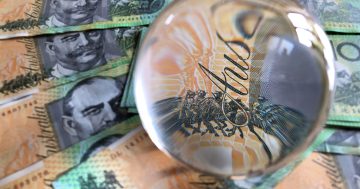Nicole Pedersen-McKinnon* says the continuing pandemic doesn’t have to get in the way of your investment goals.
 Although we’re entering another coronavirus-crisis year – albeit one where we are learning to live with the pandemic – that doesn’t mean you need to put your financial plans and goals on hold.
Although we’re entering another coronavirus-crisis year – albeit one where we are learning to live with the pandemic – that doesn’t mean you need to put your financial plans and goals on hold.
Most borders are open – even to Queensland – the quarantine requirements seem to be relaxing by the day and a close contact now has to be extremely close.
After the economically challenging time we’ve had, 2.1 million more people than last year did not make new year’s resolutions.
However, three-quarters of Aussies have formulated financial goals, research by Finder found.
Chief among these are saving more (51 per cent), spending less (32 per cent) and investing (24 per cent).
These are all great goals but, with investing, probably the most daunting is knowing where to put your money.
So, let’s take a look at the options, and the outlook for profits.
Property
Nationally, property values increased by a record-breaking 22 per cent in 2021, according to CoreLogic.
But it wasn’t uniform – while prices were up 21 per cent in the capitals, they grew by an astonishing 26 per cent in the regions.
But there’s a softening trend.
Each month since March last year, the gains have been getting a little less.
In Sydney and Melbourne, growth has slowed significantly, with Melbourne even going slightly backwards last month (0.1 per cent).
In fact, Brisbane, Adelaide and regional Queensland were the only markets where there is no evidence the accelerator is easing off just yet.
Two factors seem to be at play: property is more affordable in these areas and there is still a short supply.
Of course, it’s all because of this mass decentralisation as our work habits change – possibly permanently – and millions of people are allowed to work from home… anywhere.
But you have to think that, at some stage, everyone who is going to relocate will have relocated and the insane demand with the limited supply we’ve had will rebalance.
The sharemarket
The Australian sharemarket exceeded its pre-coronavirus levels in April last year and after some volatility late in the year, ended 13 per cent higher.
Remember, the market had previously reached a record high in February 2020 but lost 10 per cent of its value in just one day as investor confidence fell off a cliff on the coronavirus shutdown.
Total falls exceeded 30 per cent in the next 11 traumatic weeks before it began turning around.
But it was a wild ride.
Whenever investing in the sharemarket, the key safety measure is diversification, which is now possible with even small amounts of money.
Exchange traded funds (ETFs), which you buy and sell like shares, offer exposure to a broad range of companies in an index of your choice, whether a general index (like the S&P/ASX200) or a specific industry one (like S&P/ASX200 Resources).
ETFs won’t outperform that index but are designed to mirror its returns.
So-called ‘active’ management – where a fund could fall short or climb higher than an index – is also available cheaply through listed investment companies.
Just a note about cryptocurrency: the volatility has been extreme.
Crypto investment is for money you can afford to lose.
It’s wise to withdraw your original investment when you can and just let the profits run.
It’s also advisable to take some of those profits.
I’ve heard too many stories of people who had hundreds of thousands of dollars ‘on paper’ and lost it.
Tips for the cash-strapped
What if you have literally nothing spare to invest?
Well, don’t forget you have super ticking away in the background – your employer must now pay in 10 per cent on your behalf… so you’re partaking in the sharemarket gains.
Indeed, the median balanced super fund put on 12.5 per cent last year, according to SuperRatings.
What’s more, it has grown 6.6 per cent annually since 2000, despite the credit crack-up and coronavirus crisis.
Check you’re in a good, consistent fund on the new Your Super portal at myGov.
The other thing you can do to get ahead even though times may be tight is to turn the pandemic mortgage price war to your advantage.
The cheapest, quality mortgage, with an offset account, carries an interest rate of just 1.85 per cent versus a typical 2 percentage points more with a big bank.
That means if you refinance a $500,000 mortgage and simply keep your repayments the same – what I call up stumps but still stump up – you’ll save more than $185k and shave six years off your home loan.
*Nicole Pedersen-McKinnon is a financial educator and commentator, and the author of How to get mortgage-free like me.
This article first appeared at au.finance.yahoo.com.








